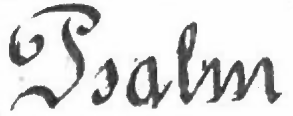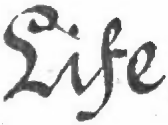Subsections of Part 1 - Elementary Course
Lesson 1 - The Signs of the System
Lesson 1 - The Signs of the System

The signs of this System are formed from the two simplest of geometrical figures, namely the Straight Line and the Circle.
The straight line both full length and half length takes the following directions indicated by the arrow: 

A large and small circle are used, the latter being about half the size of the former: 

These circles are now divided first by a line drawn through them Vertically 
 thereby giving us these four signs:
thereby giving us these four signs: 
 . Next by a line dividing them Horizontally
. Next by a line dividing them Horizontally 
 and giving us the following signs:
and giving us the following signs: 
 i.e.
i.e. 
 . And lastly, the circles are cut into quadrants:
. And lastly, the circles are cut into quadrants: 
 =
= 
 =
= 

The following supplementary signs, chiefly used as diacritical or distinguishing marks, are also made use of: a dot 
 , a dash
, a dash 
 , and the acute
, and the acute 
 , and grave
, and grave 
 accents.
accents.
The Consonants formed from the Straight line

 |
B 
 |
P 
 |
drawn straight downwards |
|---|---|---|---|

 |
D 
 |
T 
 |
drawn from left to right |

 |
G 
 |
K 
 |
drawn obliquely from right to left |

 |
V 
 |
F 
 |
drawn obliquely from left to right |

 |
R 
 |
L 
 |
drawn upwards from left to right |
Observe that the soft and longer sounds B, D, G, V are expressed by the longer lines whilst their corresponding hard and shorter sounds P, T, K, F are expressed by the shorter ones.
The consonant R has two distinct shades of sound, one hard or trill-sound as in broil, umbrella; the other is a soft and frequently barely audible sound as in door, fear, heart, this latter may be distinguished from the former by a dash written in the middle of the sign: 
 .
.
The Consonants formed from the Semi-circles
S 
 |
Z 
 |
drawn from left to right | 
 |
|---|---|---|---|
Sh 
 |
Zh 
 |
drawn from left to right | 
 |
M 
 |
N 
 & NG & NG 
 |
drawn downwards | 
 |
It will be noticed that the soft sounds Z and ZH as in zeal, as, vision, are distinguished from their corresponding hard sounds by a dot. The difference between the two nasals N and NG is also indicated by a dot.
The Consonants CH J TH hard TH soft
The true sound-value of the consonant CH is found in the words church, chariot, chess, etc.
The corresponding soft sound is J as in jerk, giant, jest, etc. CH is formed from two quadrants of a small circle 
 written in the same direction as the sign for K viz
written in the same direction as the sign for K viz 
 .
.
J is written the same way but two quadrants of a large circle are used viz 
 .
.
Since TH is a blending of the sounds of T and D, we write its equivalent phonetic character which is formed from two quadrants of a circle joined together, in the same direction as T and D viz 
 i.e.
i.e. 
 .
.
The soft sound as in There is written full length 
 .
.
The hard sound as in Thistle is written half length 
 .
.
The Consonants Y and W
Y. A small semi-circle in this position 
 , written downwards and having a dot above is Y.
, written downwards and having a dot above is Y.
W. The consonant sound W is represented by a quadrant of large circle traced upwards, on the right hand side of which a dot is placed viz 

The joining together of consonants
In order to connect two consonants together we add the sign of the second to the termination of the first, writing the compound sign with one stroke without lifting the pen.
Examples: kl 
 , lk
, lk 
 , mt
, mt 
 , tm
, tm 
 , sg
, sg 
 , st
, st 
 , gr
, gr 
 , rg
, rg 
 , chr
, chr 
 , rch
, rch 
 , sd
, sd 
 , dj
, dj 
 , jr
, jr 
 , lp
, lp 
 , pl
, pl 
 , thm
, thm 
 , mth
, mth 
 , nr
, nr 
 , rth
, rth 
 , thr
, thr 

It is better to avoid forming an angle between two consonants, wherever is is optional, as for instance 
 , it is more rapidly written thus
, it is more rapidly written thus 
 .
.
Ex: vs 
 , rsh
, rsh 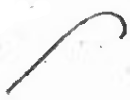
 , md
, md 
 , ps
, ps 
 , dn
, dn 
 , shp
, shp 
 , mn
, mn 
 , nm
, nm 
 .
.
Note the following somewhat difficult connections: jm 
 , nj
, nj 
 , njm
, njm 
 , js
, js 
 , gj
, gj 
 .
.
Consonants

 |

 |

 |

 |

 |

 |

 |

 |

 |

 |

 |
||
|---|---|---|---|---|---|---|---|---|---|---|---|---|
| P | K | CH | T | TH | F | L | S | SH | M | Y | ||

 |

 |

 |

 |

 |

 |

 |

 |

 |

 |

 |

 |

 |
| B | G | J | D | TH | V | R | R | Z | ZH | N | NG | W |
Lesson 2 - Vowels 1
Lesson 2 - Vowels 1

The vowels AH AW OO UH (short)
The joining of vowels and consonants
In the beginning of words
Join the vowel in such a way that it is either to the left or below. The reason for this will appear later. We may tabulate this rule thus:
The vowel goes to the left for 

The vowel goes below for 
 Ex: ag
Ex: ag 
 , ar
, ar 
 , ob
, ob 
 , om
, om 
 , at
, at 
 , od
, od 
 , as
, as 
 , us
, us 
 , ath
, ath 
 , oth
, oth 
 , ang
, ang 
 , ur
, ur 
 , ut
, ut 
 , up
, up 
 , ug
, ug 
 , etc.
, etc.
In the body of words
Trace the vowel outside the angle formed by two consonants, viz f-d 
 with a vowel f-a-d
with a vowel f-a-d 
 .
.
Ex: back 
 , dock
, dock 
 , rob
, rob 
 , top
, top 
 , took
, took 
 , foot
, foot 
 , full
, full 
 , pull
, pull 
 , that
, that 
 , sad
, sad 
 , mask
, mask 
 , cast
, cast 
 , charge
, charge 
 , god
, god 
 , good
, good 
 , block
, block 
 , clock
, clock 
 , etc.
, etc.
At the end of a word
Vowels may be written either above or below, to the right or to the left.
Ex: shadow 
 , show
, show 
 , to
, to 
 , body
, body 
 , army
, army 
 , know
, know 
 , blue
, blue 
 .
.
The vowels AH AW OO O (long)
| AH | 
 |
arm | 
 |
|---|---|---|---|
| AW | 
 |
all | 
 |
| OO | 
 |
food | 
 |
| O | 
 |
code | 
 |
| UR | 
 |
urn | 
 |
AH AW OO
These are the long sounds of the short vowels AH AW OO. We write no new sign for these, we simply place over the short vowel sign a horizontal dash that is commonly used to denote a long sound.
N.B. The dashes may, in practice, be omitted as the context will usually supply their omission. Such signs are necessary, however, in cases where any uncertainty may arise.
Ex: awl, all 
 , bawl
, bawl 
 , dawn
, dawn 
 , walk
, walk 
 , caught
, caught 
 , bought
, bought 
 , lawn
, lawn 
 , fought
, fought 
 , laugh
, laugh 
 , palm
, palm 
 , jar
, jar 
 , art
, art 
 , farm
, farm 
 , star
, star 
 , father
, father 
 , arm
, arm 
 , food
, food 
 , flute
, flute 
 , prove
, prove 
 , fool
, fool 
 , poor
, poor 
 , tooth
, tooth 
 , room
, room 
 , suit
, suit 
 , tool
, tool 
 .
.
O
Lesson 3 - Vowels 2
Lesson 3 - Vowels 2

The vowels EH and EE
| EH | 
 |
net | 
 |
|---|---|---|---|
| EE | 
 |
knit | 
 |
The short vowel EH as sounded in net and let is represented by any one of the four small semicircles 
 .
.
For the short vowel EE, as in knit, give, the same signs are used but with the addition of a small dot placed above them 
 .
.
The method of joining these signs to others
It is important to clearly understand and faithfully follow this rule, viz. “In joining these signs to others you must avoid in so doing forming an angle. From a consonant to a vowel an angle must never be formed. Nor from a vowel to a consonant, when at the beginning of a word.”
In the body of a word there will be an angle sometimes, from a vowel to a consonant, but never from a consonant to a vowel.
The following examples will illustrate this rule.
When a word begins with a vowel
Begin with the little semi-circle and place the consonant-sign that follows, to the right or above, in accordance with the rule enunciated in Lesson 2, 2, a.
Ex: echo 
 , ebb
, ebb 
 , elm
, elm 
 , elbow
, elbow 
 , if
, if 
 , it
, it 
 , is
, is 
 , ill
, ill 
 , elk
, elk 
 , elf
, elf 
 , effort
, effort 
 , error
, error 
 , Italy
, Italy 
 , idiot
, idiot 
 , essay
, essay 
 , ember
, ember 
 , else
, else 
 , ell
, ell 
 , egg
, egg 
 , embark
, embark 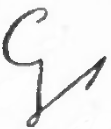
 , ignore
, ignore 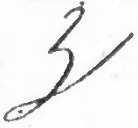
 , imp
, imp 
 , etch
, etch 
 , livery
, livery 
 , irritable
, irritable 
 , image
, image 
 , etc.
, etc.
Of the for equivalent signs 
 choose the one that can be used without forming an angle, e.g. in joining ‘e’ to ‘b’ if forms an angle, viz
choose the one that can be used without forming an angle, e.g. in joining ‘e’ to ‘b’ if forms an angle, viz 
 ; nor no. 2
; nor no. 2 
 , or no. 4
, or no. 4 
 ; but with no. 3 there is no angle formed:
; but with no. 3 there is no angle formed: 
 .
.
From a consonant to a vowel
Choose the semi-circle that will not form an angle with the consonant-sign.
Ex: bill 
 , bell
, bell 
 , sell
, sell 
 , sill
, sill 
 , mill
, mill 
 , melt
, melt 
 , effect
, effect 
 , this
, this 
 , else
, else 
 , ell
, ell 
 , elder
, elder 
 , egg
, egg 
 , best
, best 
 , practice
, practice 
 , tell
, tell 
 , till
, till 
 , chest
, chest 
 , dip
, dip 
 , rip
, rip 
 , cellar
, cellar 
 , fellow
, fellow 
 , bellow
, bellow 
 , below
, below 
 , jest
, jest 
 , skip
, skip 
 , whip
, whip 
 , rest
, rest 
 , mistress
, mistress 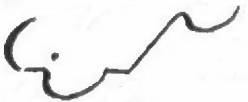
 , nest
, nest 
 , get
, get 
 , give
, give 
 , jet
, jet 
 , gelid
, gelid 
 , people
, people 
 .
.
The vowels EY and EE
| EY | 
 |
eight | 
 |
|---|---|---|---|
| EE | 
 |
deep | 
 |
These are the long vowels corresponding to the short vowels EH and I. The outline figure is the same in both cases, but EH is distinguished from EY by the latter having a dot placed under it, e.g. EH 
 , EY
, EY 
 .
.
Also, EE is distinguished from long EE by the latter having the horizontal dash placed above it, e.g. EE 
 , long EE
, long EE 
 .
.
Ex: eight 
 , late
, late 
 , place
, place 
 , maid
, maid 
 , afraid
, afraid 
 , mislaid
, mislaid 
 , plate
, plate 
 , age
, age 
 , chamber
, chamber 
 , brief
, brief 
 , deep
, deep 
 , steep
, steep 
 , meat, meet
, meat, meet 
 , feature
, feature 
 , leader
, leader 
 , seem
, seem 
 , believe
, believe 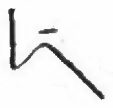
 , green
, green 
 , vain
, vain 
 , air
, air 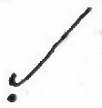
 , see
, see 
 , say
, say 
 , thee
, thee 
 .
.
N.B. The consonant Y is always represented by the small semi-circle but drawn downwards: 
 .
.
Ex: year 
 , yard
, yard 
 , yoke
, yoke 
 , Yorkshire
, Yorkshire 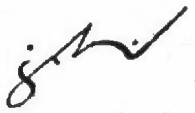
 , yacht
, yacht 
 , young
, young 
 , yellow
, yellow 
 , yawn
, yawn 
 , yet
, yet 
 , yield
, yield 
 , yearn
, yearn 
 , youth
, youth 
 .
.
Lesson 4 - Diphthongs
Lesson 4 - Diphthongs

The diphthong AI
The diphthong AI (


 ) as sounded in file and my is represented by the same sign-outline as that employed to express the vowels EH and I, but it is differentiated from these latter by the method of writing it to the other signs.
) as sounded in file and my is represented by the same sign-outline as that employed to express the vowels EH and I, but it is differentiated from these latter by the method of writing it to the other signs.
The rule laid down in Lesson 3-2 is here disregarded and exactly the opposite made use of, i.e. express the diphthong AI by making the semi-circle form an angle.
Ex: tie 
 , thigh
, thigh 
 , time
, time 
 , mile
, mile 
 , file
, file 
 , fine
, fine 
 , line
, line 
 , like
, like 
 , sigh
, sigh 
 , pie
, pie 
 , right
, right 
 , while
, while 
 , choir
, choir 
 , blithe
, blithe 
 , my
, my 
 .
.
The diphthong OW
The diphthong OW (


 ) as sounded in fowl and cow is expressed by combining the two signs representing AH
) as sounded in fowl and cow is expressed by combining the two signs representing AH 
 and OO
and OO 
 thus
thus 
 .
.
The formation of this sign both at the beginning and end of words, offers no difficulty. When it comes between two consonants the simplest and quickest way of writing it, is to trace it in the same direction as the following sign.
Ex: out 
 , hour
, hour 
 , ounce
, ounce 
 , cow
, cow 
 , now
, now 
 , plough
, plough 
 , bow
, bow 
 , about
, about 
 , fowl
, fowl 
 , mouse
, mouse 
 , crowd
, crowd 
 , gout
, gout 
 , growl
, growl 
 , gown
, gown 
 , mouth
, mouth 
 , spouse
, spouse 
 , rouse
, rouse 
 , spout
, spout 
 .
.
The diphthong OI
This diphthong (


 ) is formed by combining the vowel-signs OH and EE, viz.
) is formed by combining the vowel-signs OH and EE, viz. 
 or
or 
 or
or 
 .
.
Ex: boil 
 , toil
, toil 
 , joy
, joy 
 , noise
, noise 
 or
or 
 , boy
, boy 
 , point
, point 
 , coin
, coin 
 , toy
, toy 
 .
.
The diphthong JU
The phonetic U (


 ), as sounded in use and view, is represented by a quadrant of a large circle:
), as sounded in use and view, is represented by a quadrant of a large circle: 
 . Avoid an angular union wherever possible.
. Avoid an angular union wherever possible.
Ex: use 
 , music
, music 
 , view
, view 
 , knew
, knew 
 , obscure
, obscure 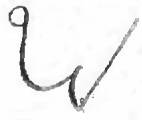
 , pure
, pure 
 , duke
, duke 
 .
.
N.B. The consonant W likewise, represented by 
 , is always written upwards.
, is always written upwards.
Lesson 5 - Nasals
Lesson 5 - Nasals

The sounds AN ON EN IN UN are such as are found in pan, pond, pen, pin, and pun. They are combinations of the short vowels a, o, e, i, and u, with the nasal n.
If, however, such combinations produce long sounds such as mane, bone, green, soon, the above remarks do not apply.
The short nasal sounds an, on, en, in, un are of such frequent occurrence that both speed and legibility is gained by expressing them by a short, simple sign.
They are then always represented by anyone of the four quadrants of a small circle, viz. 
 . The rule laid down in Lesson 3-2 about the method of joining vowels must also be observed here.
. The rule laid down in Lesson 3-2 about the method of joining vowels must also be observed here.
In order to distinguish the signs for these various nasal sounds we make use of an acute and grave accent, written either above or below the quadrant.
The following table will illustrate the method of writing them.
| AN | 
 |
with an Acute above. |
|---|---|---|
| ON | 
 |
with an Acute below. |
| EN | 
 |
without any accent. |
| IN | 
 |
with a Grave above. |
| UN | 
 |
with a Grave below. |
Ex: done 
 , son
, son 
 , print
, print 
 , sent
, sent 
 , dent
, dent 
 , grant
, grant 
 , month
, month 
 , money
, money 
 , funny
, funny 
 , tenth
, tenth 
 , thin
, thin 
 , front
, front 
 , channel
, channel 
 , chance
, chance 
 , man
, man 
 , men
, men 
 , until
, until 
 , lunch
, lunch 
 , many
, many 
 , none
, none 
 , sentry
, sentry 
 , sponge
, sponge 
 , woman
, woman 
 , women
, women 
 , land
, land 
 , Sunday
, Sunday 
 , winter
, winter 
 , appearance
, appearance 
 , phonography
, phonography 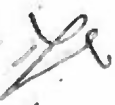
 , bondage
, bondage 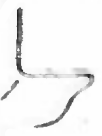
 , fancy
, fancy 
 , condense
, condense 
 , pontiff
, pontiff 
 .
.
N.B. When the nasal n is preceded by the long vowel sounds AH, AW, OO, O, EY, EE, it must be written out in full.
Ex: moon 
 , brain
, brain 
 , dean
, dean 
 , pain
, pain 
 , mean
, mean 
 , groan
, groan 
 , stone
, stone 
 , own
, own 
 , stain
, stain 
 , lawn
, lawn 
 , pawn
, pawn 
 , meanful
, meanful 
 , known
, known 
 , soon
, soon 
 , fawn
, fawn 
 , painter
, painter 
 .
.
Lesson 6 - H Aspirate
Lesson 6 - H Aspirate

At the beginning of a word
Vowel signs, diphthongs, and the short nasal sounds may be joined to a following consonant sign at the beginning of a word in one of two ways, viz. either by being written forwards or backwards (See Lesson 2-2 and 3-1).
They are written forwards for 
 .
.
They are written backwards for 
 .
.
Now, to show an aspiration at the beginning of words write the vowel in the opposite way, that is to say, if “at” is written thus 
 , then by transposing the vowel in this way
, then by transposing the vowel in this way 
 , the “H” aspirate (“hat”) is indicated. Therefore, trace upwards or forwards for a simple vowel, downwards or backwards for an aspirate.
, the “H” aspirate (“hat”) is indicated. Therefore, trace upwards or forwards for a simple vowel, downwards or backwards for an aspirate.
Ex: at 
 , hat
, hat 
 , all
, all 
 , hall
, hall 
 , it
, it 
 , hit
, hit 
 , is
, is 
 , his
, his 
 , as
, as 
 , has
, has 
 , air
, air 
 , hair
, hair 
 , and
, and 
 , hand
, hand 
 , ale
, ale 
 , hale
, hale 
 , arrow
, arrow 
 , harrow
, harrow 
 , aft
, aft 
 , haft
, haft 
 , am
, am 
 , ham
, ham 
 , altar
, altar 
 , halter
, halter 
 , ark
, ark 
 , hark
, hark 
 , arm
, arm 
 , harm
, harm 
 , earl
, earl 
 , hurl
, hurl 
 or
or 
 &
& 
 , art
, art 
 , heart
, heart 
 , eel
, eel 
 , heel
, heel 
 , eve
, eve 
 , heave
, heave 
 , edge
, edge 
 , hedge
, hedge 
 , elm
, elm 
 , helm
, helm 
 , ire
, ire 
 , hire
, hire 
 , old
, old 
 , hold
, hold 
 .
.
In the body of a word
When “H” aspirate is sounded in the body of a word, if it is a compound word as “overheard”, we may write separately the two words “over” & “heard” and indicate the aspirate in the latter word, in the manner described in no. 1. In order to show that the two signs represent one word they must be written close together.
Ex: tender-hearted 
 , overhang
, overhang 
 , warehouse
, warehouse 
 , shorthand
, shorthand 
 , Stonyhurst
, Stonyhurst 
 , loophole
, loophole 
 , underhand
, underhand 
 , upheave
, upheave 

Rule for non-compounded words and aspirated vowel-words
The position of the aspirate in words which are not compounded, e.g. behalf or enhance, or in aspirated vowel-words, e.g. how or who, is indicated by a short horizontal dash written below the vowel.
Ex: behalf 
 , behind
, behind 
 , enhance
, enhance 
 , who
, who 
 , high
, high 
 , how
, how 
 , apprehension
, apprehension 
 .
.
Lesson 7 - More on nasals
Lesson 7 - More on nasals

Nasal followed by G
When the short nasal sounds are followed by “G” the pronunciation of the syllables will not be an + g, on + g, etc., but a + ng, o + ng, etc. Add therefore the short vowel sign to the consonant sign ng.
Ex: song 
 , single
, single 
 , angle
, angle 
 , lasting
, lasting 
 , bring
, bring 
 , flung
, flung 
 , bangle
, bangle 
 , sing
, sing 
 , wrangle
, wrangle 
 , long
, long 
 , thing
, thing 
 .
.
NK
The sound “NK” is made up of ng + k : 
 +
+ 
 and is stenographically expressed by adding the “K” sign to “ng”:
and is stenographically expressed by adding the “K” sign to “ng”: 
 .
.
Ex: bank 
 , sank
, sank 
 , brink
, brink 
 , ink
, ink 
 , wrinkle
, wrinkle 
 , link
, link 
 , wink
, wink 
 , sink
, sink 
 .
.
N.B. Although it is phonetically incorrect to express the sounds ank, ink, etc. by adding the “K” sign to the short nasal sign still it may be used as an abbreviated form of the sounds.
Ex: bank 
 , sank
, sank 
 , brink
, brink 
 , ink
, ink 
 , wrinkle
, wrinkle 
 , link
, link 
 , wink
, wink 
 , sink
, sink 
 .
.
Single vowels or nasal sounds
Words expressed by single vowel or nasal sounds are always represented by the sign appropriate to each in the synoptical vowel table.
Ex: I, eye 
 , high
, high 
 , he
, he 
 , eh
, eh 
 , an
, an 
 , on
, on 
 , in
, in 
 , hen
, hen 
 , you
, you 
 , hew
, hew 
 .
.
Note on Part II
Note on Part II
By means of the system explained in this elementary course, every word in the English language can be written without difficulty. Those, however, who have desired primarily a very rapid and brief method of writing, will find in the legibility of this system and the ease in acquiring it, a compensation for the want of elegance resulting from the long form of some of the stenographic word-signs. For those, however, who desire a more rapid system of writing we have drawn up in Part II a method of abbreviating which is at the same time easily acquired, written with facility, very legible and proved to give excellent results.
Summary of Brandt’s Duployan Shorthand
Summary of Brandt’s Duployan Shorthand

Vowels
| Short | Long | |||||||||||
|---|---|---|---|---|---|---|---|---|---|---|---|---|
| AH | 
 |
fat | 
 |
AH | 
 |
father | 
 |
|||||
| AW | 
 |
not | 
 |
AW | 
 |
naught | 
 |
|||||
| O | 
 |
note | 
 |
|||||||||
| OO | 
 |
foot | 
 |
OO | 
 |
food | 
 |
|||||
| UH | 
 |
nut | 
 |
UR | 
 |
urn | 
 |
|||||
| EH | 
 |
net | 
 |
EY | 
 |
nail | 
 |
|||||
| EE | 
 |
knit | 
 |
EE | 
 |
kneel | 
 |
Diphthongs
| AI | OW | OI | JU |
|---|---|---|---|

 |

 |

 |

 |

 |

 |

 |

 |

 |

 |

 |

 |
Nasals

 |

 |

 |

 |

 |
|---|---|---|---|---|
| AN | ON | EN | IN | UN |
Consonants

 |

 |

 |

 |

 |

 |

 |

 |

 |

 |

 |
||
|---|---|---|---|---|---|---|---|---|---|---|---|---|
| P | K | CH | T | TH | F | L | S | SH | M | W | ||

 |

 |

 |

 |

 |

 |

 |

 |

 |

 |

 |

 |

 |
| B | G | J | D | TH | V | R | R | Z | ZH | N | NG | Y |
A Psalm of Life
A Psalm of Life

 |

 |

 |

 |
||||
|---|---|---|---|---|---|---|---|
| Still | achieving, | still | pursuing, - | ||||

 |

 |

 |

 |

 |

 |
||
| learn | to | labour | and | to | wait! | ||

 |

 |

 |
|||||
| Henry | W. | Longfellow |
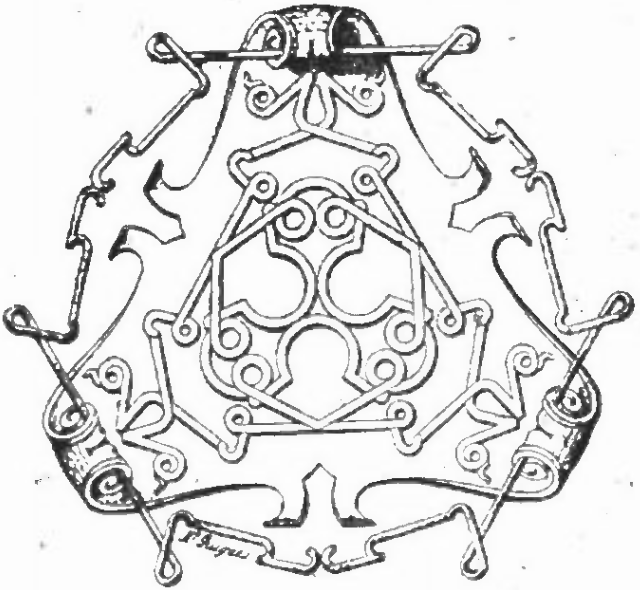
A Psalm of Life - without key
A Psalm of Life - without key

 |

 |

 |

 |
||||
|---|---|---|---|---|---|---|---|

 |

 |

 |

 |

 |
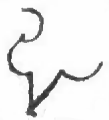
 |
||

 |

 |

 |

 |

 |

 |
||

 |

 |

 |

 |

 |

 |

 |
|

 |

 |

 |

 |

 |

 |

 |
|

 |

 |

 |

 |

 |

 |
||

 |

 |

 |

 |

 |

 |

 |
|

 |

 |

 |

 |

 |

 |
||

 |

 |

 |

 |

 |

 |
||

 |

 |

 |

 |

 |
|||

 |

 |

 |

 |

 |

 |
||

 |

 |

 |

 |

 |

 |
||

 |

 |

 |

 |

 |
|||

 |

 |

 |

 |

 |

 |

 |
|

 |

 |

 |

 |

 |

 |

 |
|

 |

 |

 |

 |

 |

 |
||

 |

 |

 |

 |

 |

 |

 |

 |

 |

 |

 |

 |
|
|---|---|---|---|---|---|---|---|

 |

 |

 |

 |

 |
|||

 |

 |

 |

 |

 |

 |
||

 |

 |

 |

 |

 |

 |
||

 |

 |

 |

 |

 |
|||

 |

 |

 |

 |

 |

 |

 |
|

 - - 
 |

 |

 |

 |

 |
|||

 |

 |

 |

 |

 |

 |
||

 |

 |

 |

 |

 |

 |

 |
|

 |

 |

 |

 |

 |

 |
||

 |

 |

 |

 |

 |
|||

 |

 |

 |

 |

 |

 |
||

 |

 |

 |

 |
||||

 |

 |

 |

 |

 |
|||

 |

 |

 |

 |

 |
|||

 |

 |

 |

 |

 |

 |

 |

 |

 |

 |

 |

 |
|
|---|---|---|---|---|---|---|---|

 |

 |

 |

 |

 |

 |
||

 |

 |

 |

 |

 |

 |
||

 |

 |

 |














